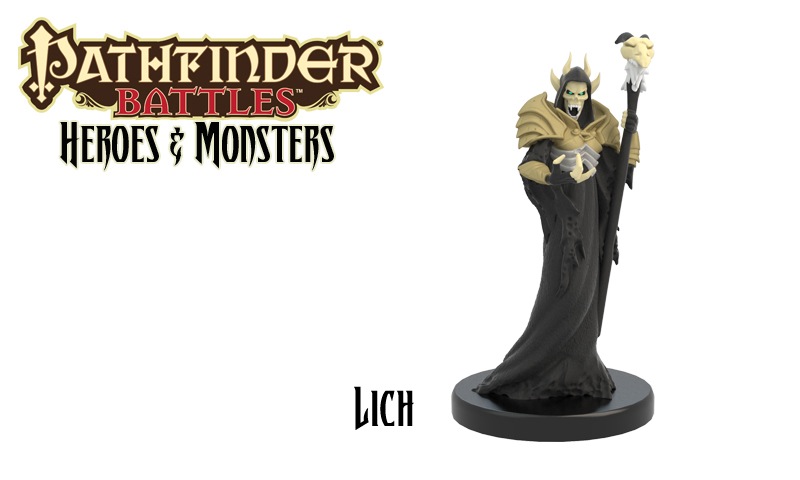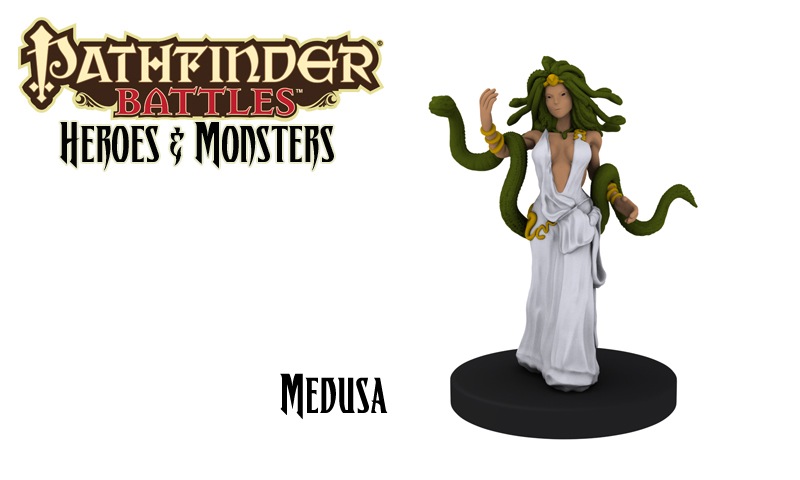You are using an out of date browser. It may not display this or other websites correctly.
You should upgrade or use an alternative browser.
You should upgrade or use an alternative browser.
Pathfinder 1E Randomized Pathfinder Minis from Paizo and Wizkids
- Thread starter czak
- Start date
Mournblade94
Hero
So, the Paizo Business Model really is 'steal ideas and models from everyone else after they discarded it and put on a new coat of paint'?
That Pepsi stuff sure is unoriginal. They just copied Coke and put it with a different label. Why couldn't pepsi come up with something original.
Burger King sucks. They totally copied McDonalds! It is so unfair Burger King makes money. They should give all of their money to McDonalds because the only reason Burger King makes money is by stealing McDonalds idea.
They definitely do!You forgot the part where Paizo does it wayyyyyyy better.
I think the troll totally kicks butt!The Troll is definitly one I hope they either Re-design or make a common....... ........YIKES!!!

IronWolf
blank
Heres the LICH
and the Medusa
ENJOY!!!
Posted here as well:
http://www.enworld.org/forum/genera...e-details-about-minis-line-6.html#post5679270
JeffB
Legend
I'd like to start buying these as my son has shown interest in the game, and he likes minis (I'm not a big fan, though I understand why some like them).
But this whole randomized BS turns me off of them. I want what I want, I need what I need. I cannot understand for the life of me why WOTC and now Paizo sells minis like this- I'm sure it's profit related*, but it's very unfriendly to the consumer.
I'll stick with counters.
*not meant as a slight- I understand the need for profit, and Paizo/WOTC need to do what keeps them in business.
But this whole randomized BS turns me off of them. I want what I want, I need what I need. I cannot understand for the life of me why WOTC and now Paizo sells minis like this- I'm sure it's profit related*, but it's very unfriendly to the consumer.
I'll stick with counters.
*not meant as a slight- I understand the need for profit, and Paizo/WOTC need to do what keeps them in business.
Last edited:
IronWolf
blank
But this whole randomized BS turns me off of them. I want what I want, I need what I need. I cannot understand for the life of me why WOTC and now Paizo sells minis like this- I'm sure it's profit related, but it's very unfriendly to the consumer.
Paizo explains it pretty clearly in the press release why these are released as randoms:
Pathfinder Battles Prepainted Miniatures Line Press Release
Prepainted Minis Press Release said:Q: Why prepainted plastic miniatures in randomized packs?
A: Prepainted plastic miniatures are expensive to make. Sculpting and painting are costly, and making molds for plastic figures is costlier still. To make all these costs work, you need to spread them out over a large number of miniatures. If these figures were released individually, some would sell better than others, and some--or even many--of them would lose money. Randomizing the miniatures ensures that you sell predictable quantities of each figure, and it also allows you to price them reasonably without losing your shirt. Another benefit of averaging out costs over a large number of figures is that it allows you to spend more money on some miniatures--you can make them larger or more detailed, or add more complicated (and thus more expensive) paint operations than you could otherwise justify. In short, selling more of the common minis allows you to spend more money on the rarer figures.
Randomized miniatures also allow you to provide more variety. Not only can you introduce more figures at once, but the fact that you make make some of them rarer than others means you can produce plenty of the figures that everyone needs, like goblins or skeletons, and fewer of the figures that have narrower appeal, like strange monsters or iconic figures.
Another factor to think about is the brick-and-mortar retailer. It's much easier for a retailer to stock single booster packs than individual packaged minis. Our first set, Heroes & Monsters, contains 40 miniatures. Selling them individually would require a lot of retailer effort to keep them all in stock--and it would also require a lot of space to display those miniatures. And if next year's 60-figure Rise of the Runelords set were released as individual minis, the retailer would then have to track and display 100 individual items. As the line continued, individual minis would soon become impossible for most retailers to keep up with. Because randomized miniatures are distributed to retailers by the case, there's usually only one item for them to order for each set, so it's easy to maintain stock. And since it doesn't take much space to display a handful of booster packs, retailers can easily continue to stock and display the entire line of miniatures as long as they're available.
Retailers who have a greater inclination toward managing more complicated inventories, or who have more space to display miniatures, will almost certainly break open random boxes to sell singles, groups of individual figures they can tailor to their customers' needs, and even complete sets.
A lot of thought has been done on the topic of the best way to produce prepainted plastic miniatures, and the random packaging method, supplemented with the occasional small boxed set of non-random figures, has proven to be the most successful. Paizo is committed to working with WizKids to ensure that customers will be able to purchase the miniatures they want at a fair price.
In addition, in the same press release they also stated WizKids will be releasing Encounter Packs, which will be visible, non-random sets occasionally.
Similar Threads
- Replies
- 41
- Views
- 15K
- Replies
- 4
- Views
- 7K
- Replies
- 11
- Views
- 6K
- Replies
- 9
- Views
- 5K
Enchanted Trinkets Complete
Recent & Upcoming Releases
-
December 9 2025 -
June 18 2026 -
October 1 2026





